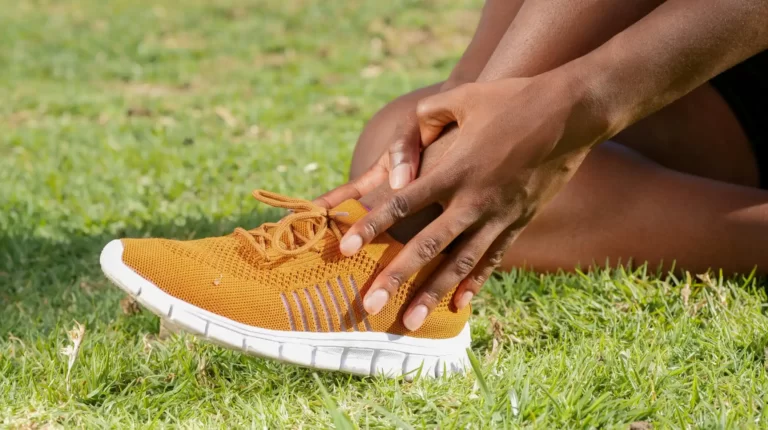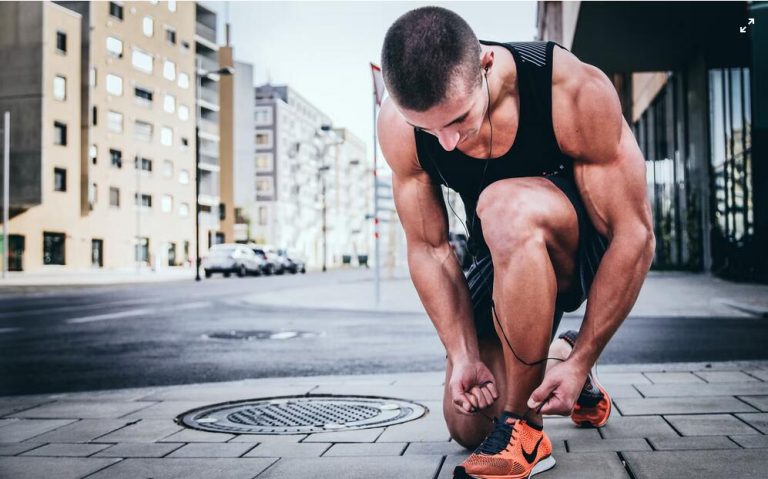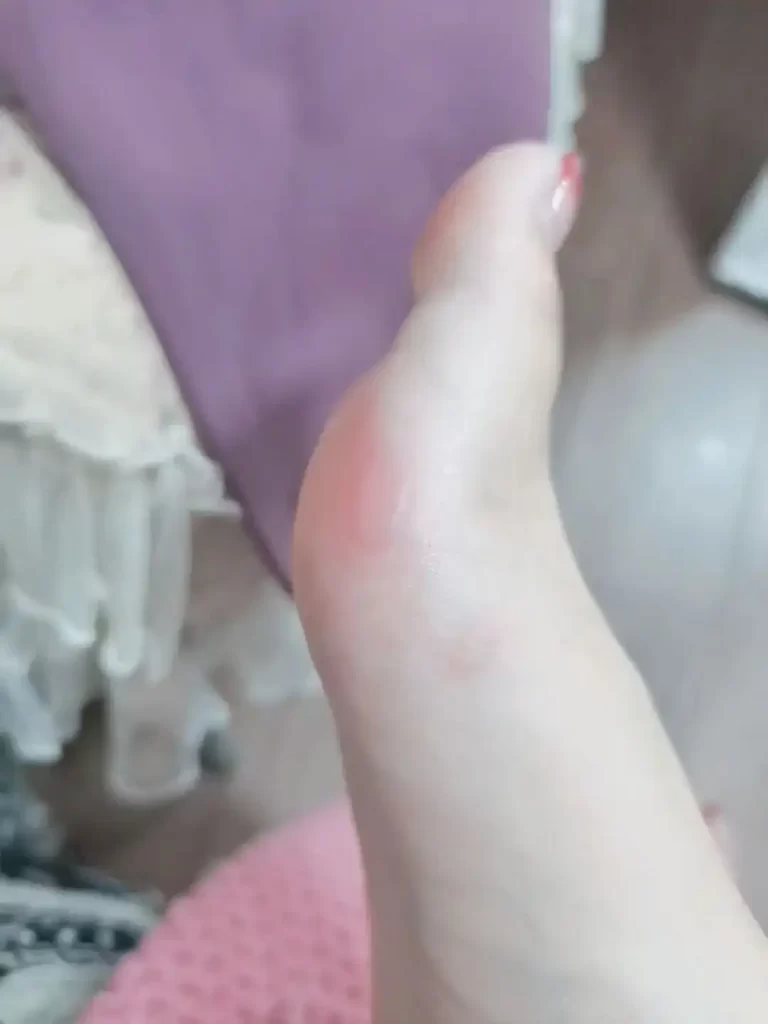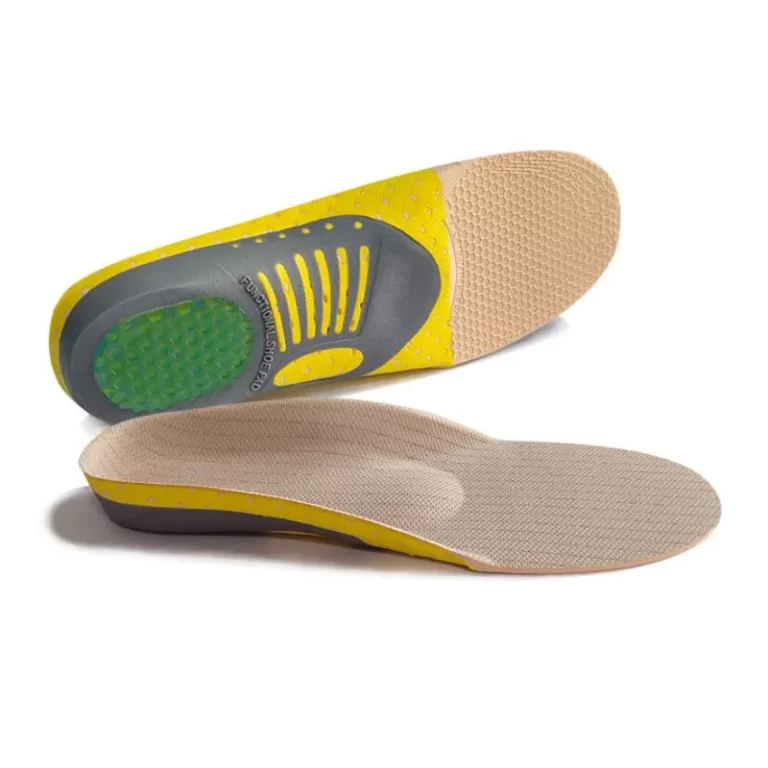Standing Tall: How Vertical Insoles Can Improve Your Posture and Relieve Back Pain
What Are Vertical Insoles?
Vertical insoles are shoe inserts. They are designed to improve posture and reduce pain. They also help the feet, ankles, and body as a whole. Regular flat insoles only provide cushioning. In contrast, vertical insoles use an angled shape. They gently realign the foot into a proper standing position.
Vertical insoles work by incorporating a higher heel and lower toe area into the insert. This sloped design helps to slightly shift weight towards the heel and re-orient the foot into a more neutral position. Vertical insoles can help by re-aligning the foot. They relieve pressure on the ball of the foot and reduce strain on the arch and plantar fascia. They also encourage better posture and shock absorption throughout the body.
The angled shape counters overpronation or supination. These conditions can throw off foot alignment. The incline helps guide the foot gently into a corrected position, without forcing unnatural angles like high heel shoes often do. This makes vertical insoles an ideal option for addressing alignment issues that contribute to pain or injury over time.
Today’s vertical insoles use exclusive stabilization and support tech. These techs enhance the insoles’ posture-improving effects. Many designs incorporate a deep heel cup, arch support, and contoured shape to cradle the foot. Advanced materials like memory foam, gel, or air cushions also provide comfort and shock absorption. The result is an insole that not only realigns the foot, but also stabilizes, cushions, and protects it during activity.
The Benefits of Vertical Insoles
Vertical insoles can provide a variety of health benefits when worn regularly:
– Improved Posture: The contoured shape of vertical insoles supports the arches of your feet, helping to align the body and improve posture. This takes pressure off the back and spine, allowing you to stand taller.
– Reduced Pain: By stabilizing the foot and ankle, vertical insoles can help relieve pain in the back, knees, hips, and other joints. The arch support redistributes weight evenly across the foot, absorbing shock and reducing strain.
– Better Shock Absorption: With every step, the impact is cushioned by the insole rather than reverberating through the skeletal system. This lessens stress on the joints and muscles, decreasing inflammation that contributes to pain.
– Increased Energy Return: Vertical insole foam compresses with each step then springs back, providing energy return to propel you forward. This makes walking and running easier by reducing fatigue. The bounce-back helps you maintain efficiency and momentum.
With biomechanical balance and cushioning from vertical insoles, you can improve posture, alleviate pain, absorb shock, and get an extra pep in your step. Consistently wearing the insoles can help sustain these benefits long-term.
How Do Vertical Insoles Work?
Vertical insoles are designed with a gradient thickness, being thicker at the back or front to gently adjust the angle of the foot inside the shoe. This redistributes body weight and changes how pressure is applied through the feet as you walk or stand.
By lifting the heel or forefoot, vertical insoles reduce pressure. They do this on the ball of the foot, heel, or metatarsal area. The location depends on where the thickest part is placed. The change in angle gently realigns the bones, joints, and muscles of the feet and legs into an improved position.
This redistribution of force relieves strain on areas prone to pain and discomfort. It also engages muscles in a way that strengthens the feet and improves stability. For example, heel lifts engage the calf muscles more, while forefoot lifts increase work for the smaller intrinsic muscles of the foot.
With continual use, vertical insoles can help retrain the foot’s motion. They also enhance shock absorption and reduce symptoms. These symptoms are associated with problems like plantar fasciitis and metatarsalgia. The exact mechanisms depend on each individual’s foot type and gait patterns. Custom orthotics do this better. But, vertical insoles are a cheaper, premade option.
Who Can Benefit from Vertical Insoles?
Vertical insoles can provide benefits for a wide variety of people. Here are some of the main groups that may see improvements with vertical insoles:
People with Plantar Fasciitis or Heel Pain
Insoles can ease plantar fasciitis. It causes pain and swelling in the heel and bottom of the foot. The incline from the vertical insole helps stretch the plantar fascia ligament and Achilles tendon, reducing tension and pain. This allows people to be more active with less heel discomfort.
Those with Knee or Back Issues
The altered alignment from vertical insoles can help redistribute weight and pressure on the knees and back. Vertical insoles can improve posture and shock absorption. They can reduce pain and strain on the knees, hips, and spine in people with arthritis, injuries, or chronic conditions. This makes walking, standing, and exercise easier on these joints.
Athletes and Runners
Vertical insoles are popular among runners and athletes to improve performance. The inclined angle helps propel the foot forward with each step, enhancing speed and efficiency. The insoles also provide energy return to get more spring out of each stride. This can boost endurance and power during intense training and competition.
People with Posture Problems
Vertical insoles correct overpronation and poor posture. They do this by lifting the heel and realigning the foot. People with flat feet, fallen arches, or lower body imbalance may find vertical insoles help. They can help them stand straighter and walk more evenly. This takes pressure off the feet while promoting proper spine, hip, knee, and ankle alignment.
Considerations When Using Vertical Insoles
Switching to vertical insoles requires an adjustment period, as your feet get used to the new angle and heightened arch support. Be prepared for some initial soreness or fatigue while breaking them in. Start by only wearing the insoles for 1-2 hours at a time, then gradually increase wear. It may take 1-2 weeks to fully adjust.
Consulting with a podiatrist can help determine if vertical insoles are suitable for your feet. Those with certain foot conditions or injuries may not be ideal candidates. A podiatrist can assess your feet, recommend proper insoles, and ensure proper fit.
Getting accurately fitted for vertical insoles is crucial. Ill-fitting insoles can cause pain, blisters, calluses, and other problems. Visit a specialty shoe store to have your feet properly measured and evaluated. Take the time to try on various insoles and find the best match. Proper sizing and support is key.
Wear the insoles in appropriate footwear with adequate room. Shoes that are too tight or narrow may negate the benefits of vertical insoles. Look for well-cushioned athletic shoes or walking shoes that don’t pinch or rub. Take the insoles with you when shoe shopping to test the fit. Break in new shoes gradually when adding vertical insoles.
With some adjustment time and proper fit, vertical insoles can provide lasting relief and support. Consult experts and take care to ease into wearing them to maximize comfort and results. Finding the right pairing of insole and footwear makes all the difference.
Types of Vertical Insoles
Vertical insoles come in a variety of types to suit different needs and preferences. The main categories are:
Front Vertical Insoles
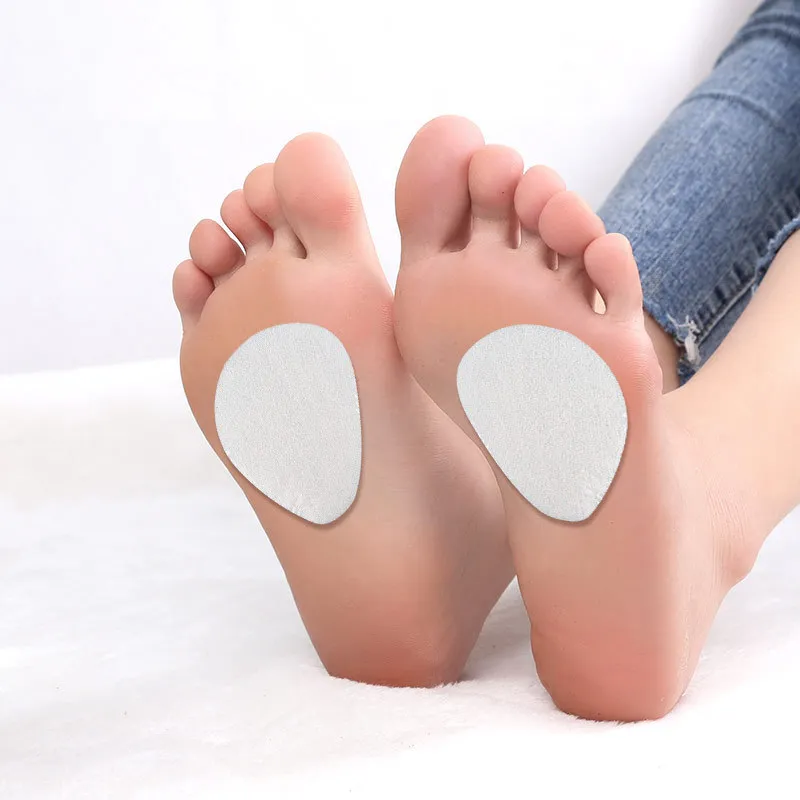
Front vertical insoles lift just the front portion of the foot. This helps to reduce pressure on the ball of the foot and relieve pain in the toes and forefoot. Front vertical insoles can provide relief for conditions like metatarsalgia and bunions.
They are thinner towards the heel and gradually increase in thickness towards the toe area. The sloped design helps propel the foot forward with each step. Front vertical insoles are a good choice for people who mostly need forefoot support.
Back Vertical Insoles
As the name suggests, back vertical insoles lift the back or heel part of the foot. They are thicker towards the heel and taper off towards the toe.

By lifting the heel, back vertical insoles help realign the foot into a more neutral position. This reduces strain on the plantar fascia ligament and provides relief from plantar fasciitis heel pain.
Back vertical insoles can also help conditions like Achilles tendonitis. They do this by taking pressure off the Achilles tendon.
Custom vs Prefabricated
Vertical insoles come in both custom and prefabricated options:
– Custom vertical insoles are made to match the exact contours of the person’s foot, providing a bespoke fit. They are molded from a cast of the foot.
– Prefabricated vertical insoles come in standard sizes. They can be trimmed down to fit most foot sizes.
Custom vertical insoles often provide the best comfort and correction. But prefabricated ones tend to be more affordable.
The choice between custom or prefabricated depends on factors like budget, fit, and severity of foot issues. Custom is recommended for those with serious foot conditions or who need precise adjustments.
Vertical Insoles vs Orthotics
Vertical insoles and orthotics are both devices that can be inserted into shoes to help support the feet and improve foot function. However, there are some key differences between the two:
– Materials: Vertical insoles are typically made from soft, compressible materials like foam or gel. Orthotics are made from more rigid materials like plastic or carbon fiber.
– Customization: Vertical insoles come in generic, pre-fabricated sizes that can be trimmed to fit the shoe. Orthotics are custom-molded from a cast of the foot to match the individual’s precise anatomy.
– Intended Use: Vertical insoles are mainly designed to provide cushioning and absorb shock. They can help with general foot fatigue. Orthotics are meant to control motion and correct biomechanical abnormalities. They are prescribed for specific conditions like plantar fasciitis or pronation.
– Provider: Vertical insoles can be purchased over-the-counter at pharmacies or retail stores. Orthotics must be prescribed by a podiatrist or orthotist after an exam.
– Cost: Vertical insoles are relatively inexpensive, usually between $10-$50. Custom orthotics are pricier, averaging around $300-$500.
Vertical insoles are best for minor foot discomfort. Orthotics are for chronic pain or structural problems. They need customized support and realignment. Those with severe foot issues like arthritis or deformities may benefit most from orthotics prescribed by a specialist. For others, over-the-counter vertical insoles can provide sufficient relief. Talk to your podiatrist to determine which option may be right for your needs.
Finding the Right Vertical Insoles
When shopping for vertical insoles, it’s important to consider your individual needs to find the best pair. Here are some key factors to take into account:
Foot Type and Arch Height
Your foot type and arch height play a big role in choosing vertical insoles. Those with high arches need more cushioning and shock absorption. If you have flat feet or overpronate, look for stability features. Make sure to measure your arch height against size charts.
Insoles made for your arch type will provide better comfort and support. Custom orthotics may be an option if you need precise arch support.
Intended Activity
Think about your intended activities. Will you use the insoles for standing all day at work? Athletic activities like running or hiking? Or for casual daily use?
For work, prioritize all-day comfort and anti-fatigue. For running, absorbency and bounce-back are more important. Get the features suited to how you’ll use the insoles.
Budget
Insoles range widely in price based on materials and features. Simple, basic insoles can cost $10-20. Higher-end options with more cushioning and support can run $40-60 or more.
Setting a budget will narrow down the selection. Just make sure not to sacrifice comfort and durability solely for a lower price point.
Brand Comparisons
Research brands known for quality insoles. RoamingFeet,Dr. Scholl’s, Superfeet, and Spenco are popular for athletic and casual insoles. Custom orthotic brands like SOLE and Footbalance offer greater customization.
Compare materials used, sizing options, and technologies like shock absorption and moisture-wicking. Read reviews and ask for recommendations to find the right brand for your needs. With some research, you can find excellent insoles to improve comfort and support.
Caring for Your Vertical Insoles
Taking good care of your vertical insoles will help extend their lifespan and effectiveness. Here are some tips for cleaning, storing, and knowing when it’s time to replace your insoles:
Cleaning Tips
– Remove the insoles from your shoes and gently wipe them down with a damp cloth to remove dirt and debris. Avoid submerging the insoles in water.
– If needed, use a small amount of mild soap and water to spot clean stains. Rinse with a damp cloth and allow to fully air dry before replacing in your shoes.
– Do not machine wash or bleach your insoles, as this can degrade the materials.
– For deeper cleaning, use an antimicrobial insole spray. This helps remove odors and sanitizes the insoles.
When to Replace
– Replace your vertical insoles every 6-12 months with regular wear, or sooner if they become excessively worn.
– Signs it’s time to replace your insoles include:
– The insoles look visibly worn, with excessive creasing, cracks, or holes
– The insoles feel thinner and less supportive
– You start experiencing pain or discomfort when wearing them
– Replacing your insoles regularly helps maintain proper arch support and cushioning.
Storing When Not In Use
– When not wearing your orthotic insoles, store them in a cool, dry place out of direct sunlight.
– Make sure insoles are completely dry before storing. Placing damp insoles into shoes or storage can allow odor-causing bacteria to grow.
– Some people prefer storing their insoles in the original packaging or a resealable plastic bag. This helps protect their shape and prevent dust or dirt buildup.
– Avoid storing heavy objects on top of the insoles for long periods, as this can damage their contour and support.
Frequently Asked Questions
– Can vertical insoles help with joint pain?
Yes, vertical insoles can help relieve joint pain in the knees, hips, back, and ankles by improving alignment and posture. The slight lift of vertical insoles can ease joint pressure. The arch support stabilizes the foot and prevents overpronation, which causes pain.
– Do you need a prescription for vertical insoles?
No, you do not need a prescription to purchase vertical insoles. You can buy them without a prescription. They are sold at many pharmacies, shoe stores, orthopedic offices, and online retailers. Getting a prescription custom insole made may give better support. But, prefab vertical insoles can also help many people.
– Are vertical insoles bad for your feet?
When used correctly, vertical insoles are not bad for your feet. They gently realign the foot into a more natural position to prevent issues caused by overpronation or collapsed arches. It’s important to gradually break-in vertical insoles and make sure they are comfortable. Improperly fitted insoles can cause discomfort. Wearing them for too long during the break-in period can also be a problem. But overall, vertical insoles provide beneficial arch and posture support.
– Can vertical insoles permanently change your arch height?
No, vertical insoles will not permanently increase arch height once you stop wearing them. They provide temporary arch support and lift while being worn, but do not physically alter your arch anatomy. Some exercises may help strengthen the arch. But, insoles alone cannot permanently change it.
– Do you wear vertical insoles all the time?
It is recommended to wear vertical insoles whenever you are on your feet for extended periods of walking, standing, or activity. Remove them while sleeping or resting. Some people only need to wear them during certain activities that aggravate foot, leg, or back pain. Work with your podiatrist or orthotist. They will help you find the right duration for your needs. Moderation is key during the break-in period.
– Can vertical insoles harm your feet or legs if used excessively?
Using vertical insoles too much could hurt your feet, ankles, and legs. This is especially true during the adjustment period. It’s best to gradually increase wear time over 1-2 weeks when first using vertical insoles to allow your muscles, tendons and joints to adapt. If you experience pain, swelling or changes in gait or posture from vertical insoles, remove them and consult a podiatrist to avoid injury. With proper use, they should not cause harm.


